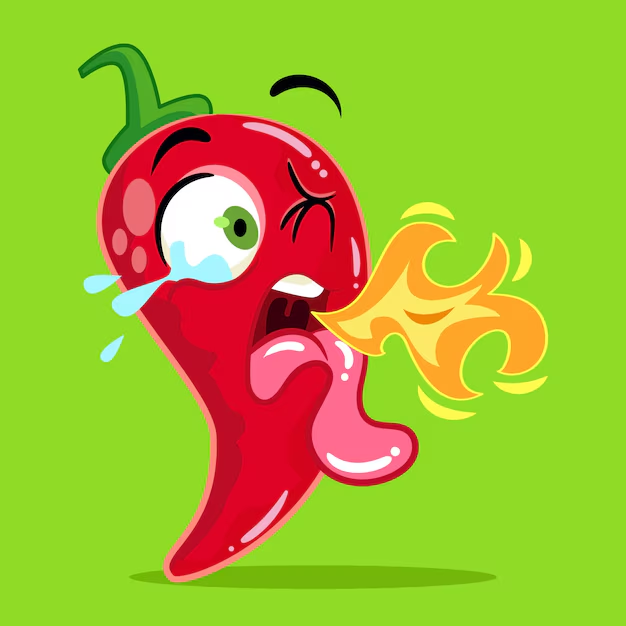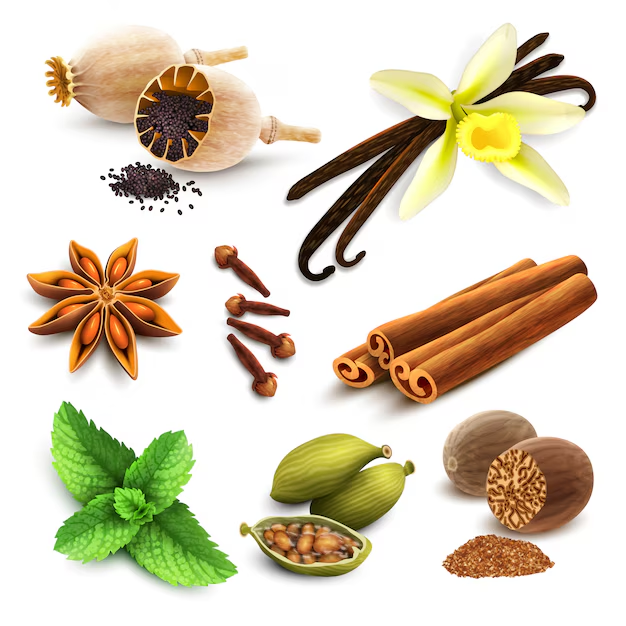Spicy Riddles – Complete Guide For Class 4 EVS Chapter 25
Welcome to iPrep, your Learning Super App. Our learning resources for Chapter 25, “Spicy Riddles,” in Class 4 EVS are meticulously designed to ensure students gain a comprehensive understanding of this essential topic. These resources include detailed notes, interactive exercises, and practical examples that cover the entire spectrum of key concepts. From fundamental principles of spices’ origins and uses in daily life to understand their cultural significance, students will explore various aspects of spices through engaging activities. Furthermore, the resources encourage critical thinking with riddles and thought-provoking questions that prompt students to connect their learning to real-world scenarios.
The concept of “Spicy Riddles” in Class 4 EVS delves into the foundational principles of life by exploring the essential characteristics that define our everyday experiences with spices. This chapter introduces students to various spices, their unique flavors, origins, and cultural significance across India. It encourages students to understand the uses and benefits of spices in food, medicine, and traditions. Through interactive riddles and fun activities, students learn to identify different spices and appreciate the diversity they bring to our culinary experiences. This approach not only broadens their knowledge but also fosters curiosity and engagement with everyday elements.
Objectives of Learning Chapter 25: “Spicy Riddles” for Class 4 EVS
By studying “Spicy Riddles” for Class 4 EVS, students will:
- Identify Common Spices: Learn to recognize spices like turmeric, chili, cumin, and cloves by their appearance, smell, and taste.
- Understand Cultural Significance: Explore the role of spices in Indian traditions, festivals, and daily life.
- Learn Practical Uses: Discover how spices are used in cooking, medicine, and household remedies.
- Encourage Sensory Exploration: Enhance sensory skills by touching, smelling, and tasting spices through engaging activities.
- Foster Curiosity: Spark interest in the origin of spices, their regional availability, and their historical importance in trade and commerce.
- Develop Problem-Solving Skills: Solve riddles and participate in activities that promote critical thinking and creativity.
This chapter- Spicy Riddles, ensures holistic learning by combining fun with valuable knowledge about spices and their everyday importance.
The Spicy Riddles
Guess spices based on clues given in the form of riddles. These Spicy Riddles highlight the various uses and characteristics of everyday spices. Here are a few of the Spicy Riddles:
Riddle 1: Who Am I?
- Clue: “I can be powdered fine to make food hot and spicy. If too much of me is added, I make you gasp – shheee… shheee… Your eyes and nose begin to water, and you cry!”

Answer: Chili Pepper Chili is the answer to this riddle. It is a spice used to add heat to dishes. It’s widely used in many cuisines worldwide and can make your food extra spicy.
Riddle 2: Who Am I?
- Clue: “Grind me and powder me – to make your food look yellow. I am mixed in oil by granny and applied to wounds quickly. I heal all wounds – big and small, that is why I am loved by all!”

Answer: Turmeric Turmeric is a well-known spice that adds a yellow color to food. It’s also used for medicinal purposes, particularly for healing wounds, and is commonly applied to the skin in many households.
Riddle 3: Who Am I?
- Clue: “Small and round like a pearl, I am black when I am whole. I can be powdered coarse or fine. A sharp and spicy taste is mine, whether it is salty or sweet. I added it as a special treat.”

Answer: Black Pepper Black pepper, often called the “king of spices,” is commonly found in kitchens around the world. It is known for its sharp taste and versatility in both sweet and salty dishes.
Riddle 4: Who Am I?
- Clue: “I am a small and skinny chap. Sometimes I am brown and sometimes black, added to hot oil and ghee. I spread my fragrance all around me when I am roasted. Curd and jaljeera are my favorite.”
Answer: Cumin (Jeera) Cumin seeds have a distinct aroma and are often used in Indian cooking to temper oil or ghee, which enhances the flavor of curries and chutneys.

Riddle 5: Who Am I?
- Clue: “I look like Zeera though green am I, to make your stomach healthy I always try. Eat me always after your meal, I refresh your mouth, you surely feel.”
Answer: Fennel Seeds (Saunf) Fennel seeds are often chewed after meals as a mouth freshener. They also aid digestion and are a popular spice in many cuisines.

Riddle 6: Who Am I?
- Clue: “I look like a nail but a bud is I, chocolate brown color and a strong smell have I. When your toothache makes you shout, I soothe the pain in your mouth.”

Answer: Clove (Laung) Cloves are used both as a spice and for medicinal purposes, particularly to alleviate toothaches. Their strong fragrance and flavor make them a staple in many dishes.
Exploring the World of Spices

The chapter – Spicy Riddles From class 4 EVS doesn’t just focus on guessing the spices through riddles; it also highlights the various ways in which spices are used in daily life. For instance, turmeric and chili are commonly used in food preparation, while cloves and fennel play important roles in both cooking and medicine. The chapter Spicy Riddles takes students on an engaging journey of discovery, using fun activities to make learning about spices interactive and enjoyable.
Spices for Healing
The use of turmeric for healing wounds is a practice that has been followed in Indian households for centuries. The chapter Spicy riddles emphasizes the versatility of spices, not only in enhancing the taste of food but also in providing medicinal benefits. The power of turmeric to heal wounds, cloves to soothe toothaches, and fennel seeds to aid digestion makes them invaluable to our daily lives.
Spices in Daily Cooking
Spices like cumin, pepper, turmeric, and chili are integral to Indian cooking. The chapter Spicy Riddles Class 4 EVS asks students to think about which spices are used in their homes for cooking. Students can also compare lists with their friends to see how similar or different their spice choices are.
Spices in Sweet and Salty Dishes
Spices can be used in both sweet and savory dishes. For example, cardamom and cinnamon are commonly used in desserts like sweets and teas, while cumin and black pepper are used in savory dishes. One of the fun activities encourages students to find out which spice is used in both sweet and salty dishes, allowing them to broaden their understanding of spice versatility.
Fun Spice Activities
Let’s now go further in the chapter Spicy Riddles and play a spice recognition game.
Spice Recognition Game

One of the key activities in the chapter encourages students to bring whole spices to class. By smelling and touching each spice, they will try to recognize the spice by its scent and texture. This activity not only helps students identify spices but also hones their sensory skills, particularly smell and touch. After completing the activity, students can mark which spices they recognized with a (P) and those they did not recognize with a (Í) mark.
Make Your Own Spicy Potato Chaat!
The chapter also provides a fun and engaging recipe for Spicy Potato Chaat, a delicious snack that combines a variety of spices like cumin seeds, red chili powder, black salt, and garam masala. Students are asked to prepare the dish and experience the impact spices have on flavor. This activity encourages students to explore the exciting world of spices in the most delicious way possible.
How Do Spice-Less and Very Spicy Things Feel on Your Tongue?
Through activities like making the spicy chaat, students are asked to think about the difference between spice-less and spicy food. How does it feel on your tongue when there is no spice? And how does it feel when there is a lot of spice? This reflection allows students to better understand the sensory impact spices have on our food and our bodies.
Exploring Spices Around the World
In addition to exploring spices used in their own kitchens, students are encouraged to learn about the spices used by their grandparents. This exploration provides a unique opportunity for students to connect with older generations and learn how spices have been passed down through time.
Furthermore, the chapter asks students to think about spices grown in their area. For example, Kuttan from Kerala mentions the spices grown in his garden, such as tejpatta, cardamom, and black pepper. This inspires students to explore what spices are locally available in their region, adding an element of geographical exploration.
Conclusion
Chapter 25, “Spicy Riddles” for Class 4 EVS, is more than just a study of spices; it’s an exciting journey into the heart of India’s culinary and cultural richness. Through riddles, games, and practical activities, students not only identify spices like turmeric, chili, cumin, and cloves but also discover their roles in food, medicine, and traditions.
This chapter encourages Class 4 EVS students to engage their senses and critical thinking to explore how spices shape our daily experiences and regional identities. From fun riddles to preparing spicy dishes, “Spicy Riddles” for Class 4 EVS promotes curiosity, creativity, and a deeper connection to our heritage.
With the iPrep Learning Super App, you can ensure that every concept in “Spicy Riddles” for Class 4 EVS is not just learned but enjoyed. The app’s interactive resources and engaging activities make this chapter a delightful learning experience, fostering knowledge and appreciation for the spices that bring life to our meals and stories!
Practice questions on Chapter 25 - Spicy Riddles
Get your free Chapter 25 - Spicy Riddles practice quiz of 20+ questions & detailed solutions
Practice Now








